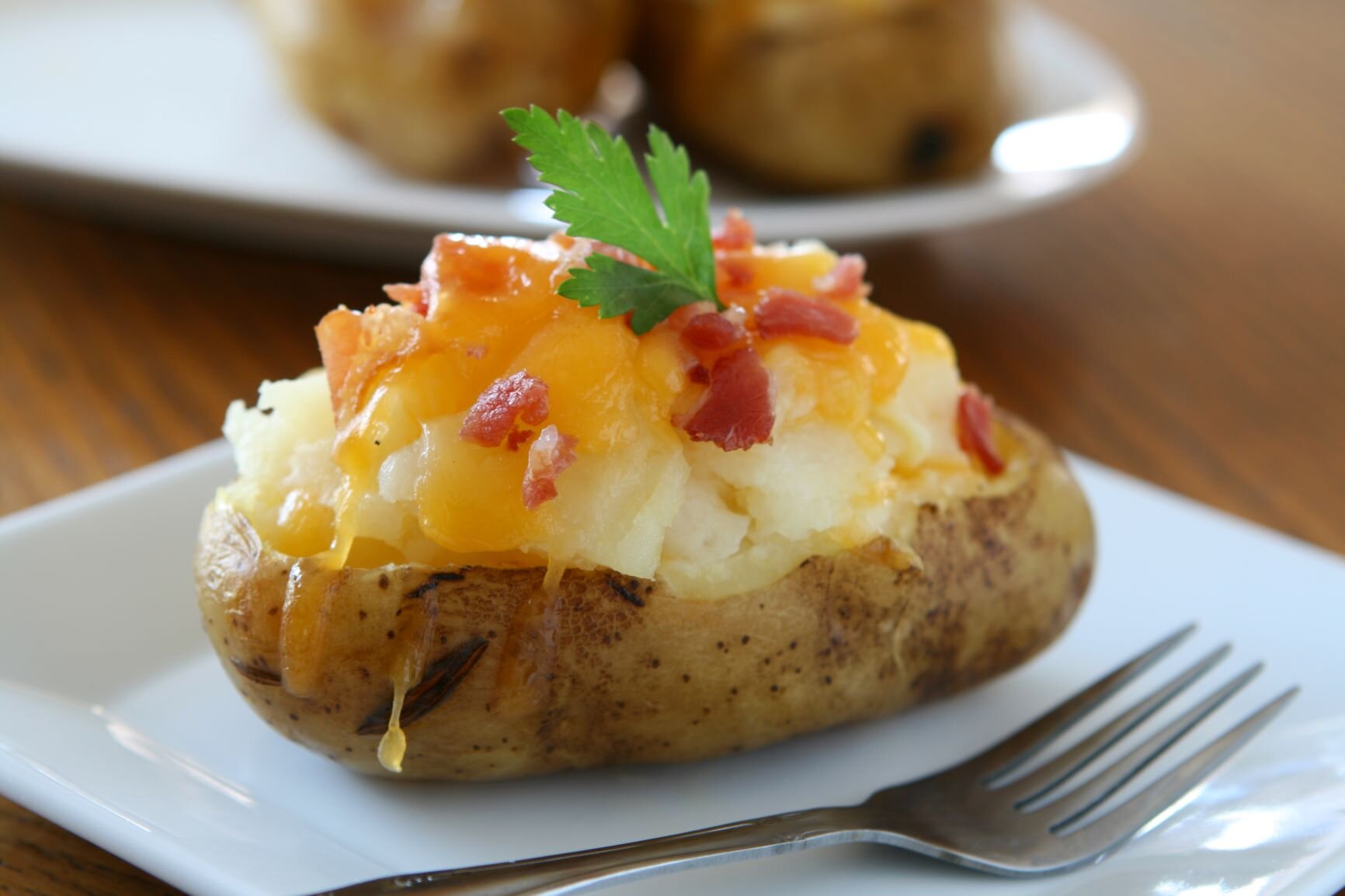Potatoes 101: Types, Benefits, and Preparation Tips
By Lizzie Streit, MS, RDN, LD
The humble spud often gets a bad reputation. Potatoes tend to be shunned due to their high carbohydrate content, but did you know that they’re actually incredibly nutritious?
When prepared in a healthful way, potatoes are an all-star addition to a balanced diet. This post discusses the types of potatoes, their health benefits, and tips for preparing them.
Types and Benefits of Potatoes
There are many varieties of potatoes. Some of the most common include Russet, Yukon Gold, and baby red potatoes, while fingerling and purple potatoes are not as well known.
All potatoes provide energizing carbohydrates, mostly from starch, in addition to insoluble fiber concentrated in their peels. They are excellent sources of potassium, an essential mineral that’s important for healthy blood pressure, and also provide vitamin C and folate.
Furthermore, potatoes are rich in compounds known as polyphenols that act as antioxidants. Antioxidants protect the body from free radical damage that is associated with disease development. Red and purple potatoes get their color from anthocyanins, which may help fight inflammation in the body and lower blood pressure, among other benefits.
Preparation Tips
To reap the many health benefits of potatoes, it’s important to prepare them in nutritious ways. Unfortunately, potatoes are often fried in vegetable oils and seasoned with tons of salt, butter, cheese, or sour cream. Even more, they tend to be served in large portions.
Healthy cooking methods for potatoes including baking and boiling. To make baked potatoes, scrub them clean, then use a fork to make several holes in the skin. Rub the skins with olive oil, and place the potatoes on a lined baking sheet. Cook for 50 to 60 minutes at 425°F until tender, rotating every 15 to 20 minutes. For boiled potatoes, add a pound of baby potatoes to a large pot of salted water and bring to a boil. Cook for 5 to 8 minutes until tender. To make mashed potatoes, drain the boiled potatoes and mash them in the pot with a dash of milk and a sprinkle of salt and pepper.
You can use mashed potatoes or a baked potato as the base for a nutritious meal. Top with ground turkey, bean chili, or another lean protein. Instead of sour cream, add a dollop of Greek yogurt or avocado. Eat the skins on for added fiber and nutrients!
Potato Alternatives
While potatoes can be part of a balanced diet, individuals with type 2 diabetes or blood sugar issues may want to watch their intake. It’s not necessary to completely avoid potatoes in these instances, but it is important to keep portions in check. Furthermore, potatoes should serve as the main source of carbohydrates at a meal, alongside other foods that are not high in carbs, such as lean proteins and non-starchy veggies.
If you’re already serving another carb-rich food, consider replacing potatoes with an alternative. Mashed cauliflower, rutabaga, and/or turnips have similar textures and colors, while being lower in carbohydrates compared to potatoes.
Note from Healthy For Life Meals: We incorporate nutrient-dense potatoes prepared in healthy ways and in appropriate portion sizes in all our meal plans. Get started today, and enjoy delicious meals like our Breakfast Stuffed Potato Skin and Beef Sloppy Joe on Baked Potato!

